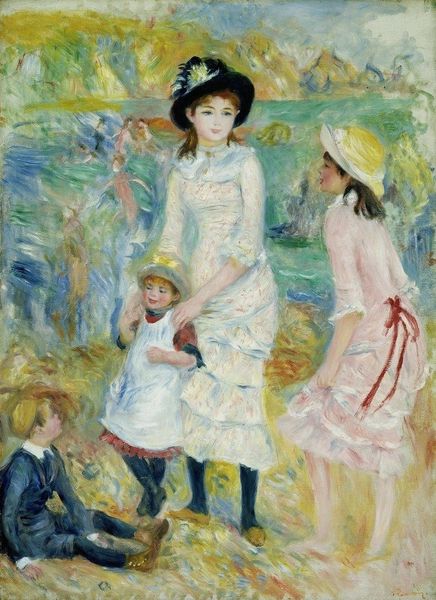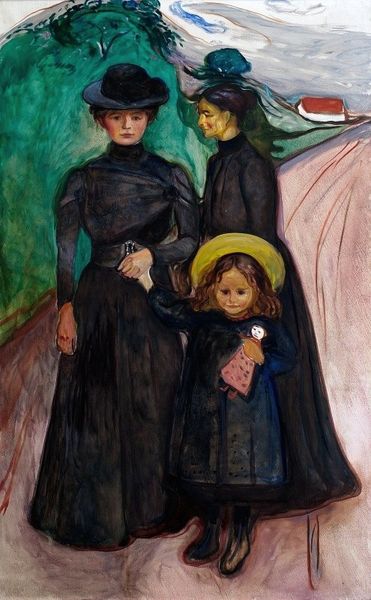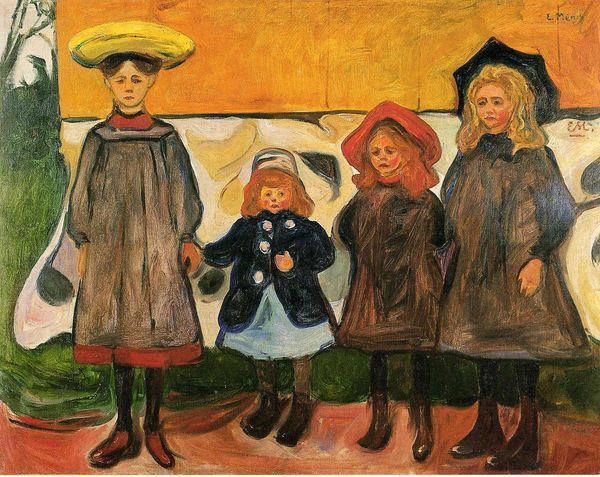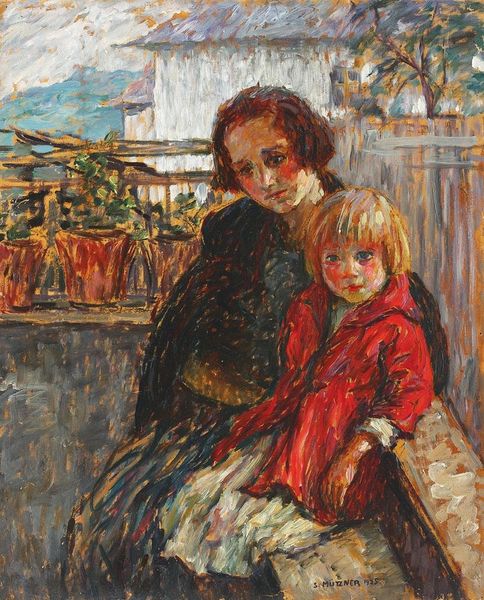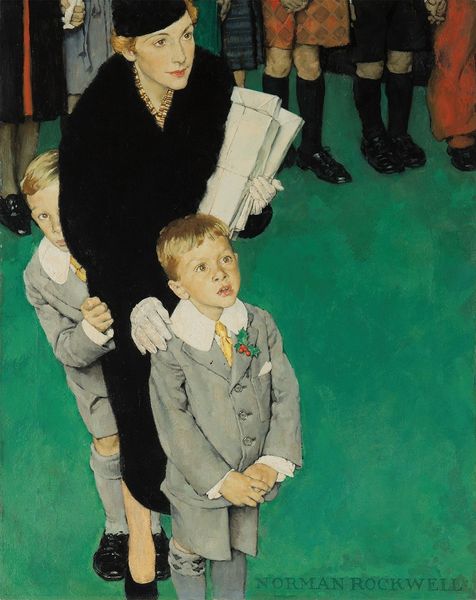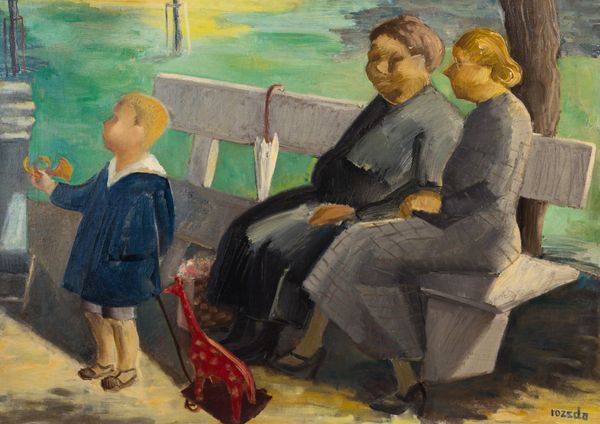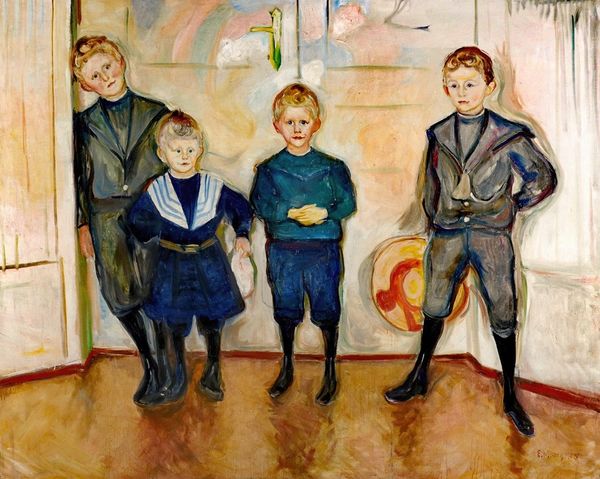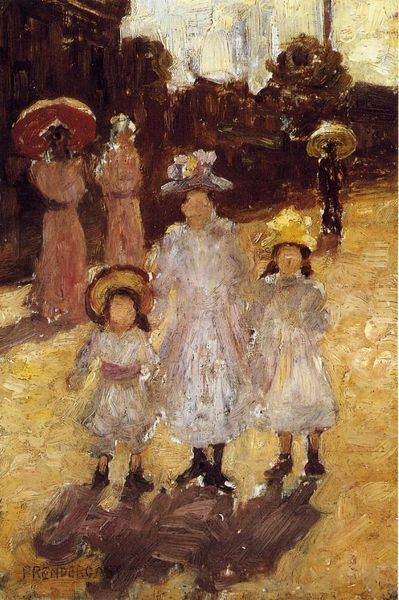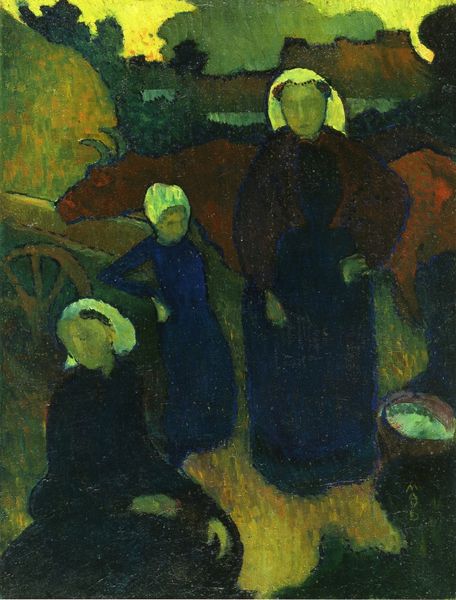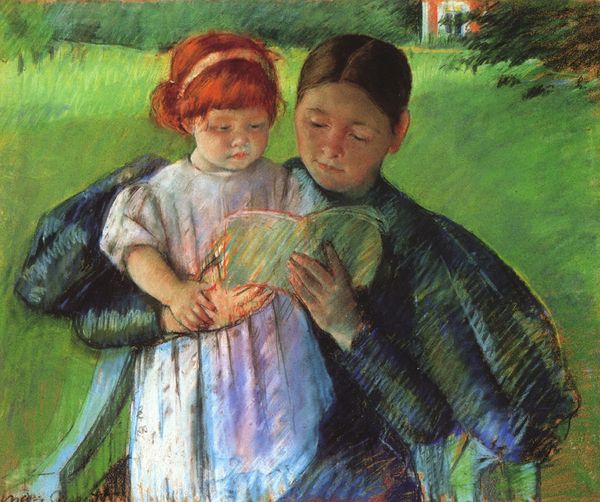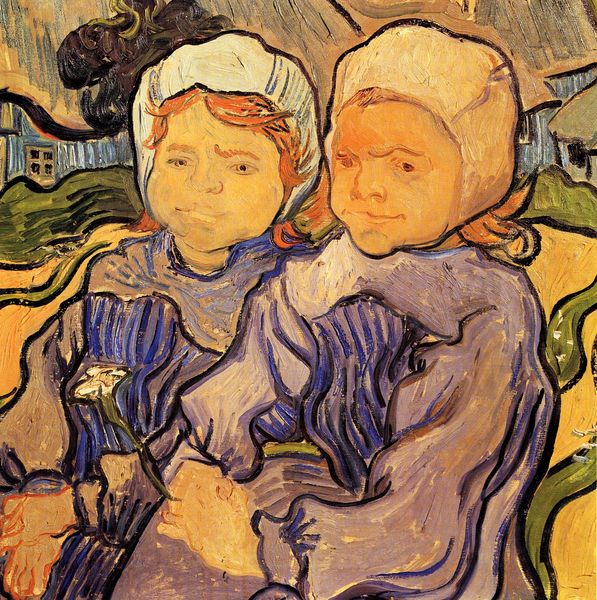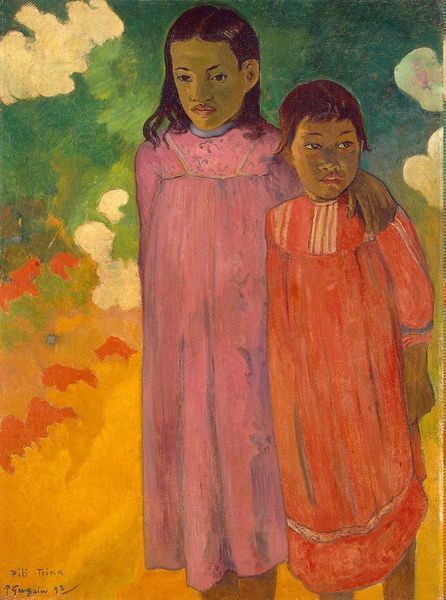
Copyright: Public Domain: Artvee
Curator: This is Edvard Munch's "Three Children," painted in 1905. I’m struck immediately by the unsettling nature of what should be a tender scene. Editor: Unsettling is right. The way Munch has applied the oil-paint makes it feel so heavy and almost suffocating; look at how roughly he renders the backdrop. What sort of context can explain this anxiety? Curator: Considering Munch’s fascination with the human psyche, the somber colors combined with the stark faces likely represents an emotional undercurrent. He had lost his mother and sister young, so the theme of childhood could trigger difficult feelings. Editor: True, and I wonder what role material conditions might have played. Consider the industrial advancements of the early 20th century. This created wealth, evidenced by the dresses they're wearing, but with such drastic material change there was palpable anxiety about social structure and health. This can be visualized in Munch’s color palette and form choices. Curator: I see that. I think Munch’s visual vocabulary, in "Three Children," employs the portrait as a container to explore memory, loss, and a confrontation with mortality. The children themselves embody this fragility, perched on the threshold of adulthood. The symbolism of the dark areas around them speaks to this uncertainty. Editor: But do these psychological and symbolic readings downplay Munch’s labor? Think of the physical act of dragging thick oil paint across the canvas to create that effect. The application and manipulation of material matters and the availability of materials played a key role in how such anxieties manifested, and we cannot exclude these concrete elements. Curator: I’ll concede the painting’s materiality absolutely impacts its reception. However, it feels essential to examine the way Munch imbues this mundane scene with symbols of dread and loss. Both combine to produce something captivating. Editor: Absolutely. This conversation helps us understand how the anxieties around material reality can blend with a meditation on inner emotion and result in powerful imagery, that we still examine today.
Comments
No comments
Be the first to comment and join the conversation on the ultimate creative platform.
